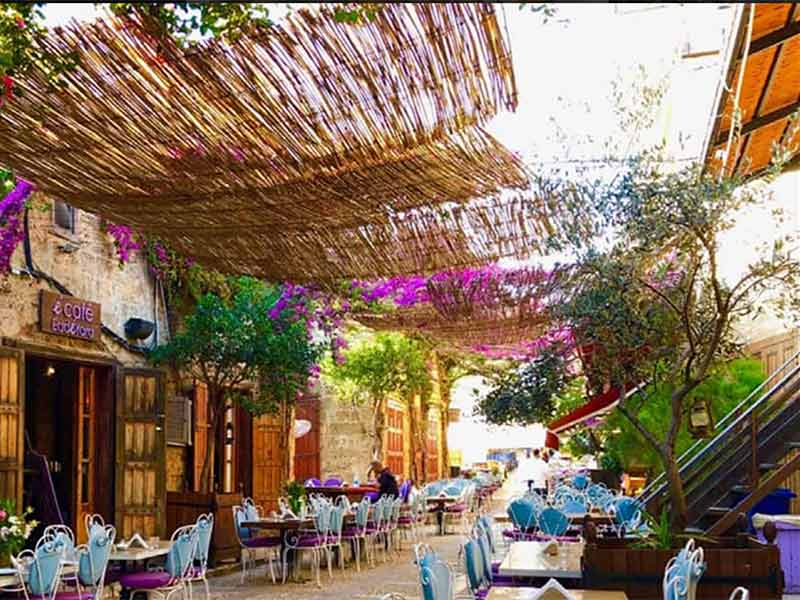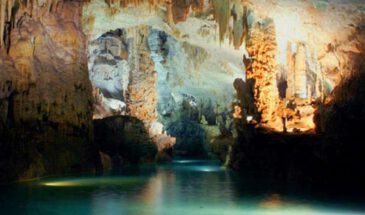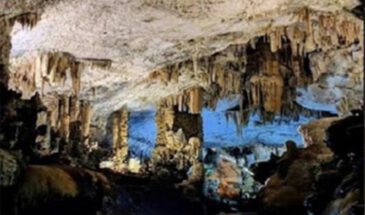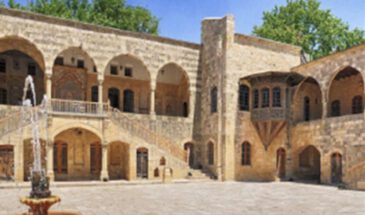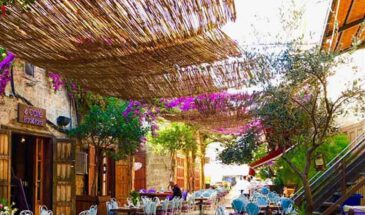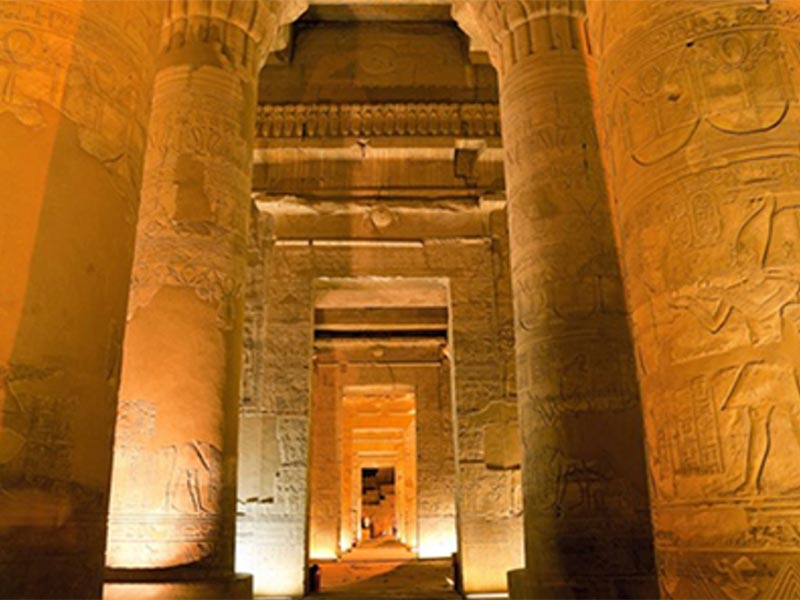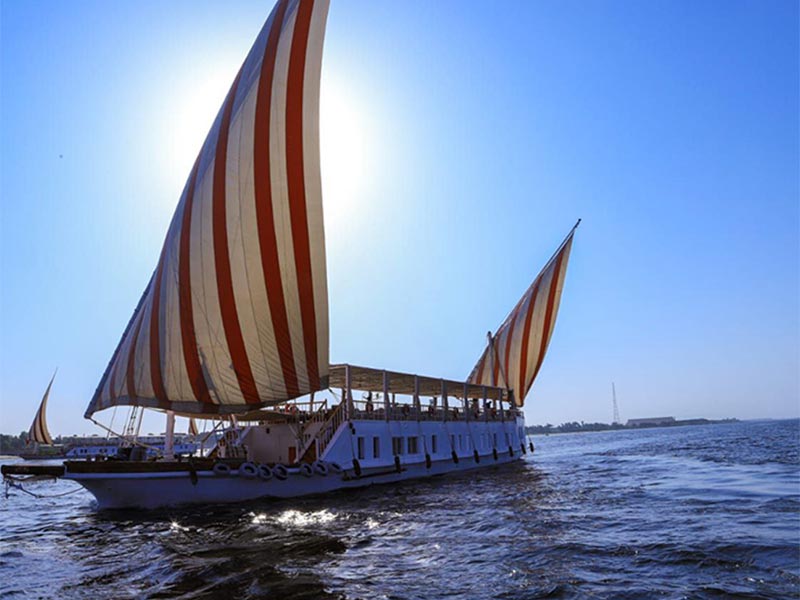- Overview
- Trip Outline
- Trip Includes
- Trip Excludes
- Gallery
- Booking
- FAQ
Beautiful Lebanon on the Eastern Mediterranean proves that one country can have it all.
There is almost no other place in the world where you can spend the morning skiing on Mount Lebanon and the afternoon on the beach by the Mediterranean.
Besides beautiful nature, Lebanon also has thousands of years of history. It is one of the oldest inhabited places in the world (one of its cities, Byblos, was established around 5000 BCE and is still inhabited today).
Visitors can take in Phoenician ruins, Greek and Roman temples, medieval Arab cities, and a
vibrant modern culture featuring some of the best food, music, and coffee culture in the world.
There is so much to see and do in Lebanon, and we have tried to present you a colorful bouquet of sights within one week.
Don’t worry about safety reasons – our travel experts take care about a safe journey.
Day 1: Beirut
Individual arrival to Beirut. The tour guide will be waiting for you to take you to the hotel.
Overnight at hotel.
Day 2: Beirut – Tyre - Eshmun Temple - Sidon –- Beirut
Drive south from Beirut along the coast to Tyre to visit the necropolis excavations, the Arch of Triumph and the spectacular Hippodrome, the second largest and best preserved of the Roman era. In the afternoon continue to Sidon. There you will visit the Qalaat Al-Bahr Fortress, also
known as the "Castle of the Sea", which was built in the 13th century on a small island at the
edge of the harbour. Then visit the bazaar of Sidon. On the way back to Beirut, a stop will be made to visit the Eschmoun Temple, which dates back to Phoenician times. Return to Beirut. Overnight at hotel in Beirut.
Day 3: Beirut – National Museum – Harissa – Byblos
We start the day with the National Museum, whose treasures provide an insight into the country’s traditions and history. We continue to Harissa village to visit the famous "Lady of Lebanon" statue which is an important and significant place for Christian pilgrims and visitors from all over the world as it represents the Virgin Mary. The statue and accompanying chapel are located on a small hill from where you can enjoy a beautiful view over Jounieh Bay. Finally you get to Byblos. The city can look back on 7000 years of history and is considered the world's oldest continuously inhabited settlement. Here you will visit the Phoenician Temple, the Roman Theater, the Royal Necropolis and the Crusader Castle. Then walk along the coastal promenade next to the harbour.
Day 4: Qusadisha Valley – Bcharre – Cedars - Batroun
You continue your trip to Bcharre and the Qadisha Valley, which impresses above all with its
overwhelming landscape. At the foot of Mount al-Makmal, the Nahr Qadisha River (Holy
River) weaves its way through the sheer cliffs. Due to its monastic settlements, Wadi Qadisha
has been a UNESCO World Heritage Site since 1998. Here you will visit the Saint Qozhaya
Church. Bcharre is one of those idyllic mountain villages that looks like it’s come straight out of
storybook.
After this visit our way leads to Bcharre. Perched atop the stunning Qadisha Valley. But there is still another highlight to come: The UNESCO Heritage site – the Cedars of God.
On the Lebanese flag the cedar stands eternally tall. It is one of the most defining features of
Lebanon`s culture. It is not only today that cedars take on a big role in putting Lebanon on the global map. The trees are first mentioned in the Epic of Gilgamesh; and over the years, many peoples have made use of cedar wood provided by the forest. Have a walk in the forest and see yourself. Finally on our way back we will have a stop-over at the Monastery of Saint Anthony
situated at a height of 950 meters above sea level in the celebrated Valley of Qozhaya,. Centuries
ago, it was a pioneering place in book-printing and till today it is a place of pilgrimage for
Christians and Muslims who come from all regions seeking cures, divine grace and peace of
mind. We end a long day of intense impressions back in Batroun, where you can enjoy the lively
evening atmosphere. Overnight stay on site.
Day 5 Jetta Grottoe – Bikfaya – Broumana – Beit Mery
In the morning drive north and visit the Jeitta Grottoe. Here you can admire the imposing
"formations" of nature, the diverse stalactites and stalagmites. It is one of the most impressive and interesting natural sites in the world. The grotto was discovered in 1836 by an American missionary who, venturing some 50 m into the cave, fired a shot from his gun and found a cavern of major importance. Jeita Grotto is the superb work of Mother Nature.
Now follow the scenic beauties of various summer residences.
Bikfaya is a town in the Matn District region of Mount Lebanon. Its stone houses with red-tiled roofs resting amidst pine and oak forests make Bikfaya one of the most sought-after suburbs of Beirut and one of Lebanon's most popular summer resorts Nestled on a hillside of the Metn district, Broummana has long been the favorite summer destination for visitors and locals alike thanks to its cool mountain air. Known as “The City of Flowers,” it is rich with colorful bouquets that adorn traditional houses. It is also the green lung of the region, with thousands of majestic pine trees lining its pretty streets.
Beit Mery is a Lebanese town overlooking the capital Beirut. The town has been a summer
mountain resort since the times of the Phoenicians and later the Romans. The name derives
from Aramaic and means "The house of my Lord".
Day 6 Anjar – Baalbak – Ksara
Depart for Anjar. In addition to the modern settlement, there are the remains of an Umayyad city founded by Al-Walid I at the beginning of the 8th century. The city is considered one of the best examples of early Islamic urban planning and has been a UNESCO World Heritage Site since 1984
The way leads to Baalbak now, a massive Roman temple complex of antiquity.The city is considered Lebanon's greatest Roman heritage and has been a UNESCO World Heritage Site since 1984. Here you will see the colossal monuments from Roman times, the Temple of Jupiter with its magnificent columns, the ornate Temple of Bacchus and the original pentagonal Temple of Venus. On the way again and stop at the Ksara winery. Feel free to taste Lebanese wine and enjoy a peaceful atmosphere.
Day 7 Beiteddine – Deir Al Qamar – Barouk Reserve
Visit Beit ed-Dine, also known as Btaddine is a small town and the administrative capital of the Chouf District in the Mount Lebanon Governorate in Lebanon. The town is located 45 kilometers southeast of Beirut, and near the town of Deir el-Qamar from which it is separated by a steep valley.
Continue to Dair al-Qamar, the former capital of Mount Lebanon Governorate. It is about 45 km southeast of Beirut. The splendor of the old capital can still be felt in its squares and palaces. Visit the Palace of Fachr ad-Dīn II (17th-18th centuries) with its famous Marie Baz Museum and Mosque, and Notre Dame Church.
Al Shouf Cedar Nature Reserve is a nature reserve in the Chouf and Aley districts of Lebanon. It is located on the slopes of Jebel Baruk mountain and has an area of 550 square km (210 sq mi), nearly 5.3% of the Lebanese territory, making it the largest natural reserve in Lebanon.
Day 8 Departure
Airport transfer and international flight back home
Meet & Assist
Guide
Entrance Fees
Transfer
Hotel (Breakfast)
Departure
Water
Lunch
Night Life (optional)
Dinner (Optional)
Please wait...
No Details Found

